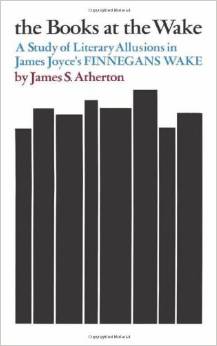Seeing, or Attempts to See (which succeeded)
As I said previously, to establish a working platform, so we can move on, let's define loosely what it is. This file will deal with "blind" visions. A "blind" vision is similar to one of the blind men from the Aesop's fable.
The same way as with Attempts to See which succeeded, to me, it is a vision which managed to capture the whole picture.
The cases presented here, in my opinion, succeeded in getting some sort of idea of the whole of Finnegans.
As mentioned, there is a third category, "Glossing", which is a compound of all the information available. Before going there, see the criteria used for sources which were used for the glossing.
List of Attempts to See (which succeeded) presented here
James
S.Atherton - the Books at the Wake
Thornton Wilder - The Skin of Our Teeth
William York Tindall - A Reader's Guide to Finnegans Wake
Cliver Hart - Structure and Motif in Finnegans Wake
Lucia Joyce: To Dance
in the Wake, by Carol
Loeb Shloss (Author), Farrar Straus & Giroux, ISBN 037419424
To buy the books, press over their covers immage:
James S.Atherton

I never heard of William York Tindall and it was very pleasant to get acquainted with his notions on Joyce, specially on Finnegans Wake.
I felt relieved when I read, and I quote, what he says about Campbell, in his Introduction of A Reader's Guide to Finnegans Wake:(Introduction, pages 25-26)
"Writing my book, I did not consult critical commentaries on the Wake; for my object, not to say again what others have said, was to say what I and my committee have to say. This book is not a summary of its predecessors or their replacement but their supplement. there are nine-and-sixty ways of looking at the Wake and all of them are right, in part at least - wrong too, in part. I kept away from Campbell and Robinson's Skeleton Key, which helped me long ago, until I was through with my job. Reopening it then, I found that these pioneers, Campbell and Robinson, say many things that they do not. "The hoax that joke bilked," like God's house, has many dimmansions" (367.27.Cf. Ulysses, 394)
Insofar as I am a critic, I am a text man, concerned less with Joyce than with what he wrote. Once somebody , reprinting something of mine in his anthology of critical types, called me a formalist. Perhaps. But categories discourage me, and formalist is a dirty word in Russia.
Reading my book over, I find it hard going. The clutter of page and line references that I thought,(*) and still think, useful gets in the way of easy reading. But this book, not for that, is for consultation - to hold in one hand with the wake in the other, while the eye, as at a tennis match, moves to and fro. Not for the dozen or so experts in the Wake, this book is designed "for the uniformication of young persons" (529.7-8) - making them as uniform and busy as ants - and others older who have something to learn.
Necessarily I have been selective in my survey of the Wake; for a book so small on a book so large has room for high spots alone. Running down the page, I pecked those words an paragraphs that, in my opinion, are essential for knowing what is going on. If one had world enough and wit, and the capacity, one could write a book on each chapter of the Wake. Things that I leave out are left out for lack of space at a times, but at other times for lack of knowledge. After all, what authority on the Wake knows the half of it? Which half is the critical question. At the end of each of my chapters, in a kind of dump, I consider matters omitted for the sake of neatness from the body of the chapter."
(*) page 3, note 1: My parenthetical
page and line references apply to every edition of the Wake, English, American,
hard cover or paperback. References to Ulysses are to the new American edition
(1961).
To make a line-marker, place a sheet of paper on any page of the Wake. Make
a mark on the margin of your sheet for each line of the page and number our
marks by fives.
